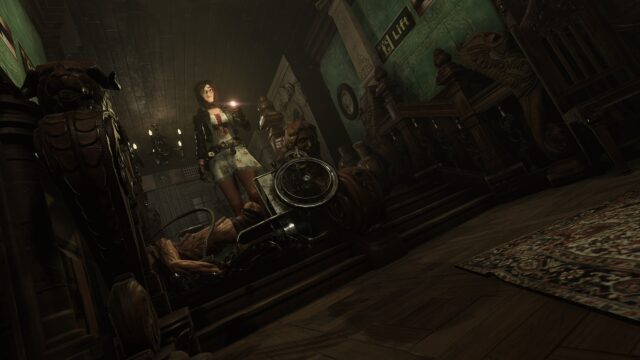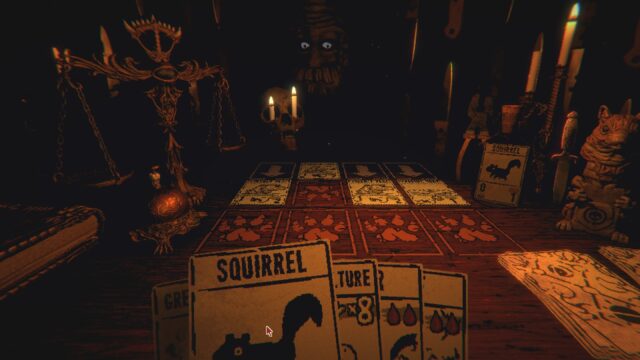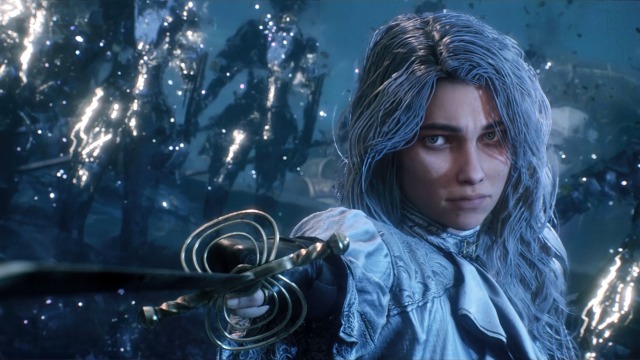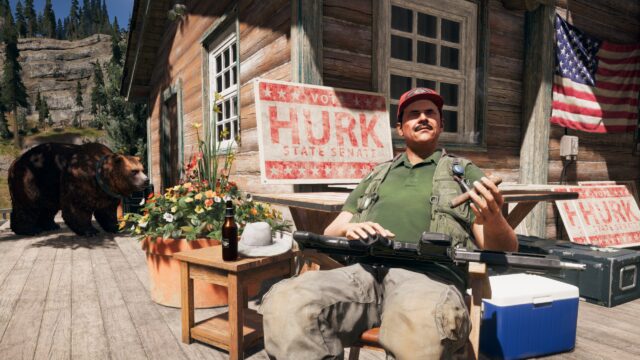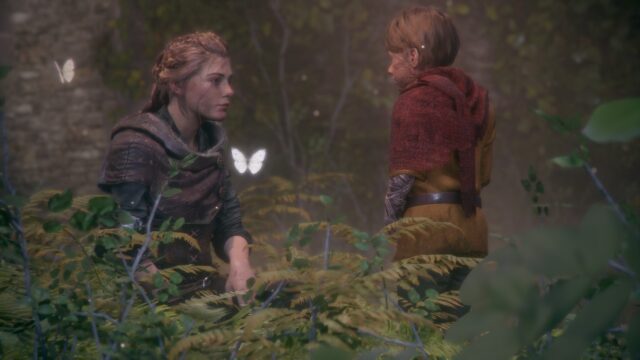The Last of Us Review
I hope our most malicious (or maybe not) Russian hackers will hack the game and launch it on PC, well, you know, it’s just fantasies. Such high-quality projects, that’s the very reason why I’m in love with Sony PlayStation.
Xbox 360 users can expect the same warm care from MS… oh, who am I kidding, they are more focused on TV gadgets instead of doing something worthwhile. I sincerely hope they won’t leave everything to third-party developers and show something good at E3.
2013 could easily become the best year for the current generation of consoles, let’s wait and see what surprises await us at E3 and GamesCom/TGS. The combination of Naughty Dog and Sony reminds me of Rare and Nintendo in the old days. These studios always deliver new, original, and high-quality games.
It’s nice to see a successful studio refusing to rely on doomed sequels and instead making a new game. And when this game turns out to be so good… it’s magnificent! Yes, this review took quite a long time to write, and I’ve already familiarized myself with the avalanche of prompt reviews that unanimously gave the game the highest ratings. I don’t know how anything can be opposed to that.

On our street, there is a house built from a multitude of clichés of zombie-survival-action. The porch looks like an abandoned quarantine zone, and the walls are covered in hastily drawn graffiti (you get the hint, we won’t give graphics 10 points). The roof is made from the debris of national monuments, and instead of parquet flooring, there are the zombies themselves.
And there are two people living in this house. They settled in it against their will. They built their lives within its walls. And all of us who live nearby know about their difficult fate and help them as much as we can. It is very challenging for them here, in this zombie house. We have witnessed how they endure hardships and lose hope, but then they stand shoulder to shoulder and continue to fight. We have made a significant contribution to their destinies. And despite all the difficulties, their story has deeply touched us.
The architects of this house do not hide that they were inspired by movies like “I Am Legend.” This house, built on the bones of many post-apocalyptic stories that came before it, is the new cinematic survival action game, The Last of Us, from Naughty Dog studio. Every brick of this house is already familiar to the reader who has had the opportunity to immerse themselves in zombie fiction: the fall of the government, cities turning into refugee camps, farewell messages on the walls, roaming bandits, desperate survivors, colossal sacrifices, and so on. We have walked these paths hundreds and hundreds of times. Moreover, at the beginning of the game, you step onto one of the most well-trodden narrative paths, so if the question “Do I need it?” escapes your lips, no one will blame you.

However, despite all the painfully familiar zombie junk, the answer will be: “A thousand times yes!” The Last of Us is an incredibly solid, emotionally draining example of pop entertainment, being a first-rate result of the synthesis of game design and the fate of virtual characters. In the end, it’s a real surprise for us.
In The Last of Us, you will mainly explore, shoot, and hide. The events take place in North America around 2033. Twenty years have passed since the world was engulfed by a devastating fungal epidemic and the subsequent death of most of the planet’s population. And by “epidemic,” I mean “turning into zombies,” and by “death,” I mean “death from zombies.”
So yes, in this zombie game, zombies are actually human fungi. Sounds terrifying? It should, because it’s truly scary. It’s scary also because there are actually cases in nature of Cordyceps (or some other) fungus consuming small living organisms, and it looks roughly like what is shown in the game. With one small exception, the abilities of the parasitic fungus in the game are somewhat exaggerated.
The screenshot shows that thing. And it also wants to kill you.
Damn, it’s itching to rip your head off.
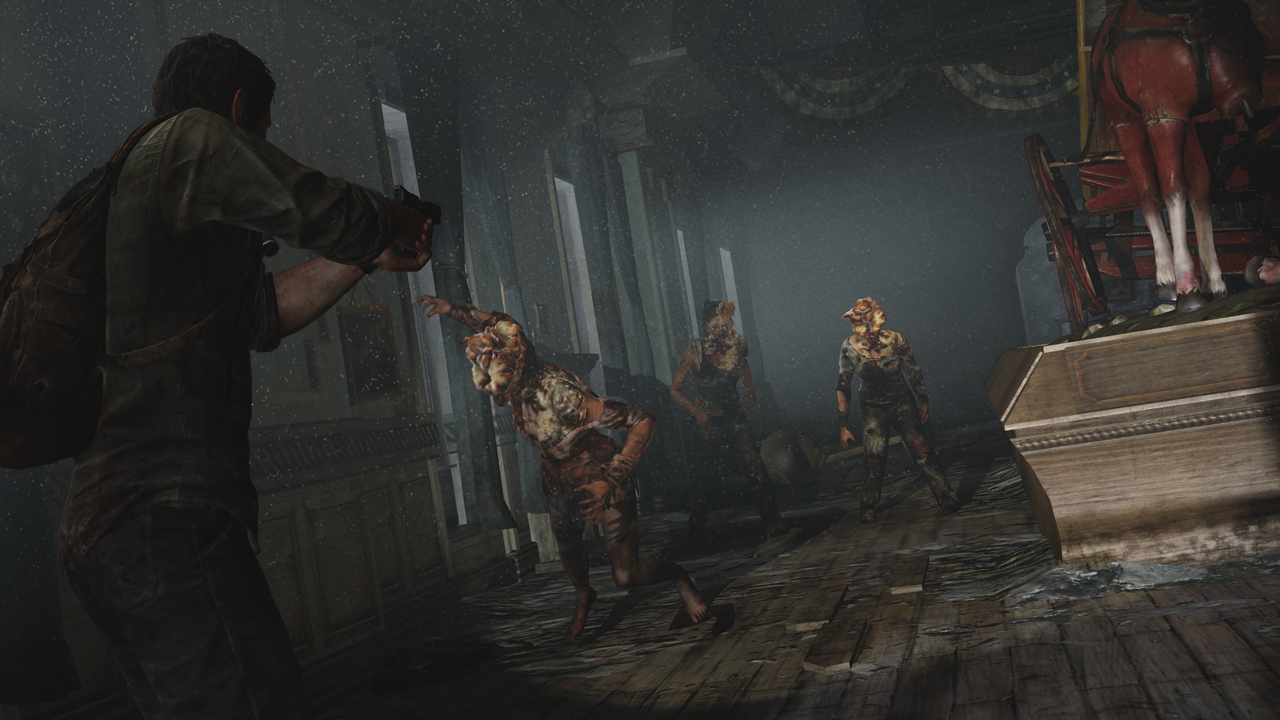
There are two main characters in the game: a beaten-down middle-aged smuggler named Joel (Troy Baker) and a clever 14-year-old girl named Ellie (Ashley Johnson). Against all common sense, Joel agrees to secretly escort Ellie out of the relatively safe but wildly militarized quarantine zone in Boston. But something goes wrong (see the list of clichés in zombie games) and soon both heroes embark on an epic adventure across the country.
The atmosphere of the game is dark, but not overly harsh. Rather, it is refreshingly straightforward. This style is evident in every episode, whether it’s shocking brutality or unexpected mercy. The Last of Us turned out to be quite long, but the developers managed to maintain a dark atmosphere throughout the game. A natural zombie apocalypse from head to toe.
The Last of Us has two literary cousins in spirit: the book “Child of Men” by P.D. James (and its captivating film adaptation by Alfonso Cuarón) and “The Road” by Cormac McCarthy. McCarthy’s deeply personal horror masterpiece has recently become very popular among video game developers, and its influence is particularly keenly felt here. The Last of Us clearly demonstrates McCarthy’s characteristic naturalism, as the events of the game unfold in a nightmarish world that nature has reclaimed with unimaginable cruelty. Like “The Road,” The Last of Us delves into the unsightly side of human nature, when our desire to connect with others conflicts with the animal instinct to survive at any cost. Is the companion with whom we have to share blood and food just waiting for a chance to kill us? But what good is it to live alone? What will our children inherit in a world where death is all around, except for even greater deaths?

In other words, like in many post-apocalyptic stories – hello again, zombie cliché! – the fungal epidemic in The Last of Us is simply a backdrop for a very intimate human story. Like last year’s game The Walking Dead, this is not a story about zombies, bandits, and the downfall of civilization. It is a story about loss, hope, friendship, and family, which takes place against the backdrop of zombies, bandits, and the downfall of civilization. It should be noted, a very worthy story.
It may not come as a surprise to say that Naughty Dog has managed to create a first-rate mix of the action genre and an incredibly deep story about people. Their Uncharted series of games literally swim in an ocean of clichés from Indiana Jones movies, holding onto a buoy labeled “Best Displays of Wit and Charisma” – so good that it’s hard to complain about the one-sidedness of everything that happens. But the Uncharted games lacked depth and a cohesive atmosphere, even despite their angular attempts to introduce drama in the third installment of the series. In comparison, The Last of Us appears more cohesive and much more human, meaning the linear storytelling that has become a studio brand has undergone a clear evolution.
The most touching dramatic moments in The Last of Us take place in non-interactive cutscenes. But the game itself, where the characters come under your control, is very well done. I would describe the gameplay as “Stealth/Survival,” as for the majority of the game, you hide around corners, waiting for a deadly enemy to unexpectedly jump out and give them a beating.

In some cases, you will encounter blind zombies that use echolocation to track you, while in others, there are regular bandits who rely on good old-fashioned vision through their mother nature-given eyeballs. If your play style can be described as “hack and slash,” you can engage in frequent shootouts, which may seem chaotic and careless. However, you can simply sneak past more than half of the enemies. Ammunition and precious medical supplies are constantly scarce, so retreating is often a reasonable decision. Fortunately, due to the enemies’ caution, you can often retreat, regroup, rally your companions, and dive back into the fight, but from a different angle.
Each game scenario is carefully crafted and unique, and the encounters with enemies unfold surprisingly smoothly. Naughty Dog usually avoids repetitive and monotonous shootouts that have flooded the market of big-budget action games, including their own Uncharted series. Open levels allow for a considerable amount of improvisation, and limited resources repeatedly force you to scavenge through your backpack to survive the next confrontation. Oh, how I panicked during the first major clash with the infected, blindly pushing forward! I struck blow after blow, threw bricks at disfigured faces, sprinted through empty halls, galloped, climbed… Then I hid and counted my bullets – only two left in the revolver. The last mushroom zombie, more dangerous than ever, let out a piercing scream and lunged at me. One shot, two… I just had to hit.
While the default difficulty mode is not a walk in the park, the other two, even more challenging modes, make The Last of Us truly intense. And it’s not because the enemies are harder to kill, but because ammunition and materials for crafting weapons become a real scarcity. Being forced to rely on every possible trick and tactic, I appreciated the titanic effort that was made to keep The Last of Us balanced and stimulating throughout the game.

However, no matter how skilled and captivating The Last of Us may be, it is definitely not a “fun” game. In essence, it is a perfect example of how inappropriate the word “fun” is in this case. The Last of Us is incredibly brutal, often horrifying, and soul-wrenching. It may not have the excessive amount of blood that saturates the atmosphere of other, more cartoonish video games, but the cruelty in this game possesses a wild animalistic core that frightens to the depths of the soul.
Joel lunges at a person, elbowing them in the trachea, and then smashes their jaw with a final blow against the countertop. Ellie jumps on the shoulders of another person and, screaming and wheezing, repeatedly stabs them with a knife until they fall to the ground. Throughout the story, both protagonists become entangled in dark and sometimes commit acts of true savagery.
But this brutality does not seem gratuitous. It is heavy, weighty, and necessary. With a few exceptions, the scale of the confrontations is not very large: here, five people are hunting you. They want to kill you and take your belongings. Hide from them, fight them. No matter what you do, you must survive.
It should be noted that the characters never behave as if there is not an ounce of cruelty happening around them. Unlike many other games of this type, you do not get the impression that the action and cutscenes exist in parallel universes. Even in the midst of another massacre, Ellie constantly reminds Joel of his cruelty, and by the end of the story, each character will have a whole set of physical and emotional scars.
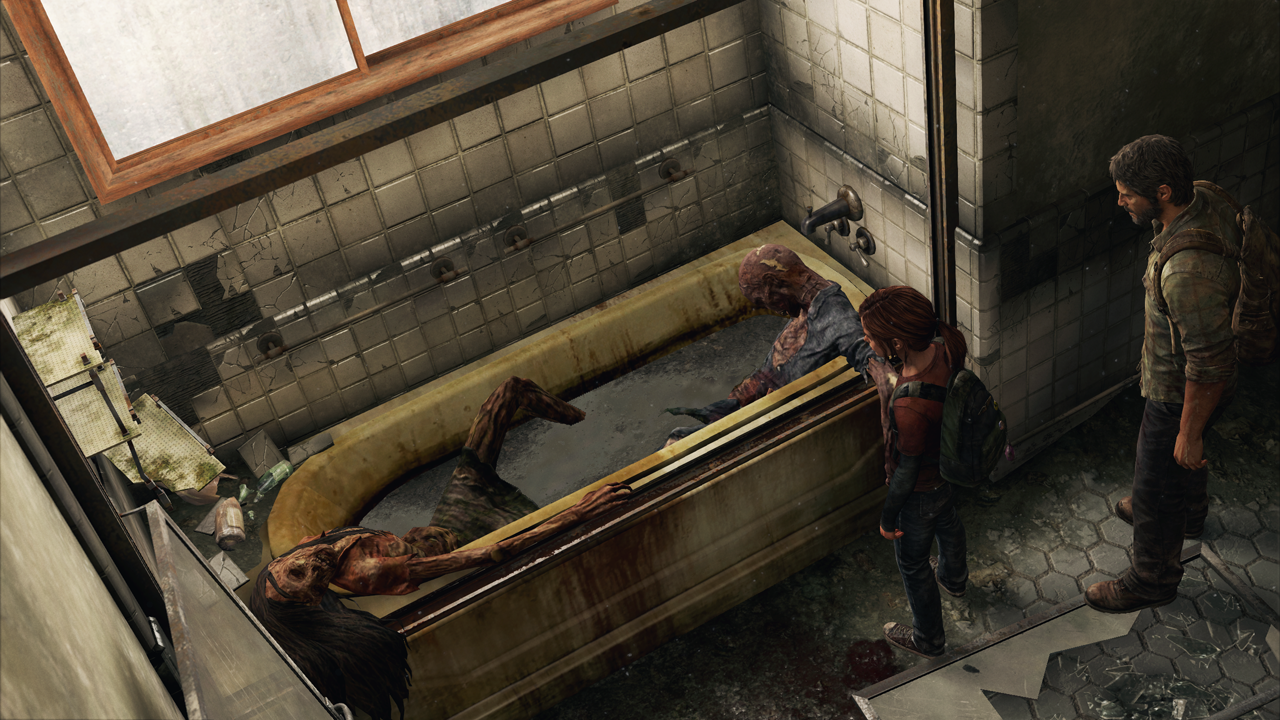
However, The Last of Us still requires some effort from you to believe what is happening on the screen. And not every player is capable of such effort. From time to time, your partner’s AI does some strange things, and zombies may not even notice Ellie, even if she is galloping around them on a sparkling pony. In addition, there are also some questions about stealth, such as enemy AI, the plausibility of which is very rare. No one, not even someone as dangerous as Joel, is able to kill several dozen armed hunters, but nevertheless, Joel comes out as the winner of this fight. Also, towards the end of the game, the rhythm of “fight-explore-fight” becomes quite predictable. But overall, The Last of Us captivates with its plausibility, rather than realism. And it does it very well.
The impact of the story largely depends on the game’s difficulty. After finishing, I replayed the first quarter of The Last of Us in New Game Plus mode, where I could use upgraded weapons and improved characteristics that I had at the end of the game. As a result, I found that as the difficulty decreases (you cannot play New Game Plus mode at a higher difficulty level than the one you completed the game on), the story loses a good portion of its charm. The greatest catharsis and plausibility are achieved precisely through the game’s difficulty – an excellent illustration of how it is the main way to intersect the plot and gameplay.
In addition, violence becomes less suggestive in the multiplayer modes that come with the game. There are not many of them, only two types: the first is a traditional deathmatch, and the second is a deathmatch without respawning. Personally, I preferred the second mode.
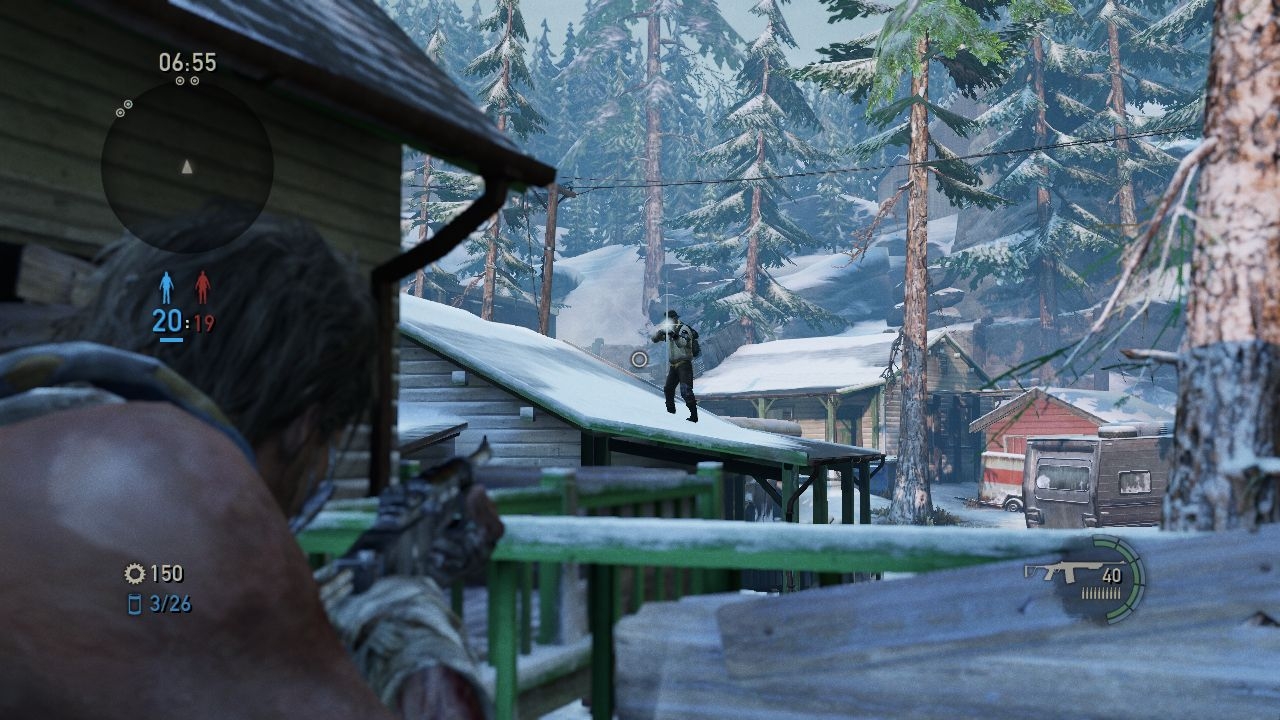
Both modes are wrapped in a clever metagame, where at the beginning you have to choose one of two factions, and then, by winning matches, earn resources for your team. Theoretically, it’s a great idea, but it seemed too abstract to me, although I haven’t played much. Every time, I barely understood what was actually happening and who all these people were.
Furthermore, this uninterrupted multiplayer violence, where one person tirelessly and without respite beats up another person, becomes so much that it loses all meaning. After each kill, no matter how gruesome it may be (let’s say you knock down a wounded enemy and shoot a bullet right into their wide-eyed terrified face), I became more and more disconnected from the action – until somewhere after half an hour I realized that I was playing another third-person shooter. This is by no means a criticism of the multiplayer’s quality – it is skillfully done and interesting in its own way. Moreover, it encourages cunning and stealthy players, which is great news for people like me who can’t keep up with the frantic pace of other online shooters.
After playing the multiplayer for just a couple of hours, I couldn’t grasp the full picture of the metagame, so it’s difficult for me to judge in that regard. Overall, at this moment, when recommending the game, I’m unlikely to refer to the multiplayer, but nevertheless, it is engaging and does not diminish the merits of The Last of Us.
In the single-player game, the characters have to commit unimaginable acts in order to survive, even in such extreme circumstances. That’s why their story is literally filled with the horrifying violence they inevitably have to commit. And this is a remarkable achievement that cannot be compared to the dissonance present in the Uncharted series. Nathan Drake from Uncharted is a charming rogue who, at times, kills a thousand or so people. But in The Last of Us, the personalities of Joel and Ellie are shaped (or distorted) by the terrible acts they have to commit. The game represents a balanced and cohesive attempt to intertwine brutal gameplay and a character-driven story. And often, it succeeds.
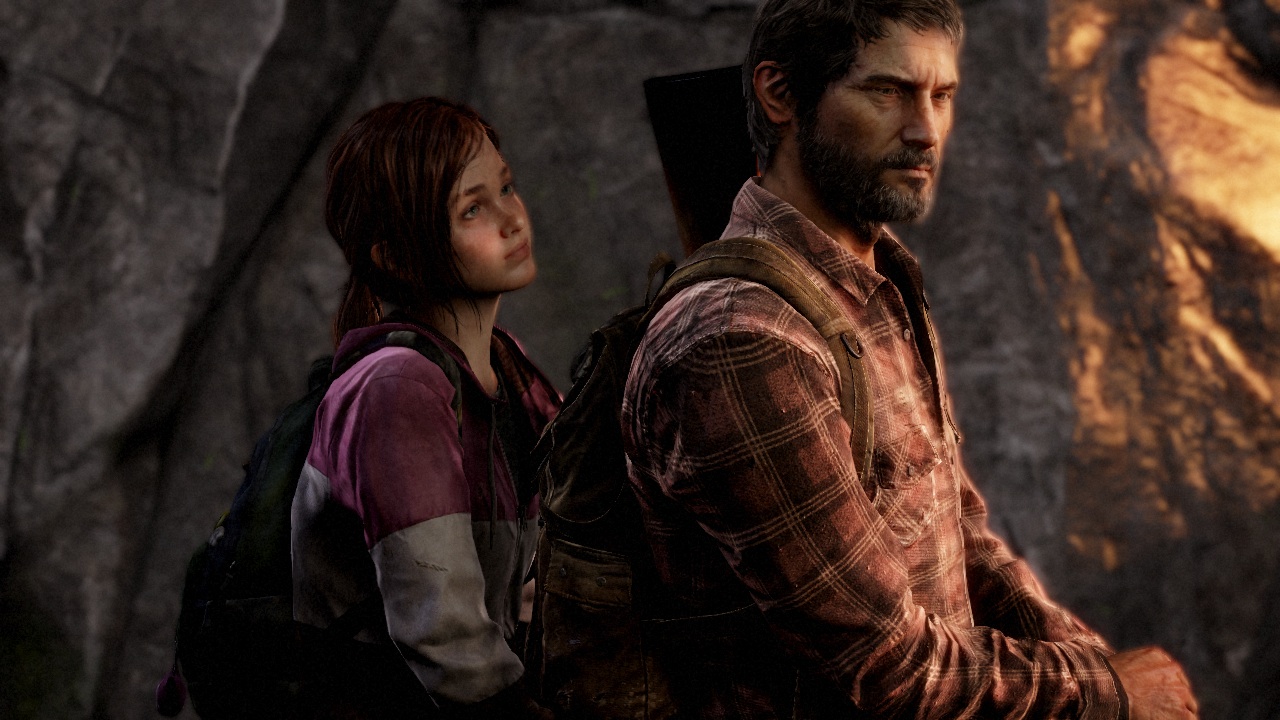
By the way, all of this became possible thanks to the outstanding performances of the two main roles by people named Troy Baker and Ashley Johnson. There was an indescribable depth of sympathy between them. They fearlessly play their roles, constantly dealing with complex and emotionally raw material, but turning it into a masterpiece time and time again.
The plot does not suffer from a lack of scenes, during which your stomach is turned inside out from emotional overload at best. In one of the early episodes, a barely perceptible intonation and exchange of glances between two characters is enough to convey years of backstory. For this, thanks should be given to the excellent script, which came from the pen of creative director Neil Druckmann and his team of writers, and partly, without a doubt, to the inhuman efforts of the technical department at Naughty Dog. Motion-capture specialists, directors, and animators were able to transfer high-quality acting skills into lifeless polygons. At times, their work is simply astounding.
As the game was nearing its end, I remembered the words of Walt Williams, the lead writer of last year’s military shooter Spec Ops: The Line, which were heard this year in a video from GDC. “Your main character cannot be more righteous than the game mechanics allow,” Williams said to an audience packed with game developers. In other words, if the game requires the main character to ruthlessly kill people, there is no need to make the player think that this character is a hero.

Joel is not a hero. He is an old, experienced killer who has done as much evil as good in his life. The game does not shy away from this fact, but rather constantly reminds us that Joel’s morality is at least ambiguous.
Characters hint at the fact that in the past, Joel was a highway robber who convinced the people closest to him to participate in the killing of innocents. “We’re shitty people, Joel,” one woman remarks early in the story. “We’re not the first, and we won’t be the last.” And yet, thanks to Baker’s portrayal, Joel is a character who is incredibly enigmatic and captivating, not in spite of his flaws, but because of them. I expect his actions throughout the game to be the subject of countless debates and discussions. I eagerly await them.
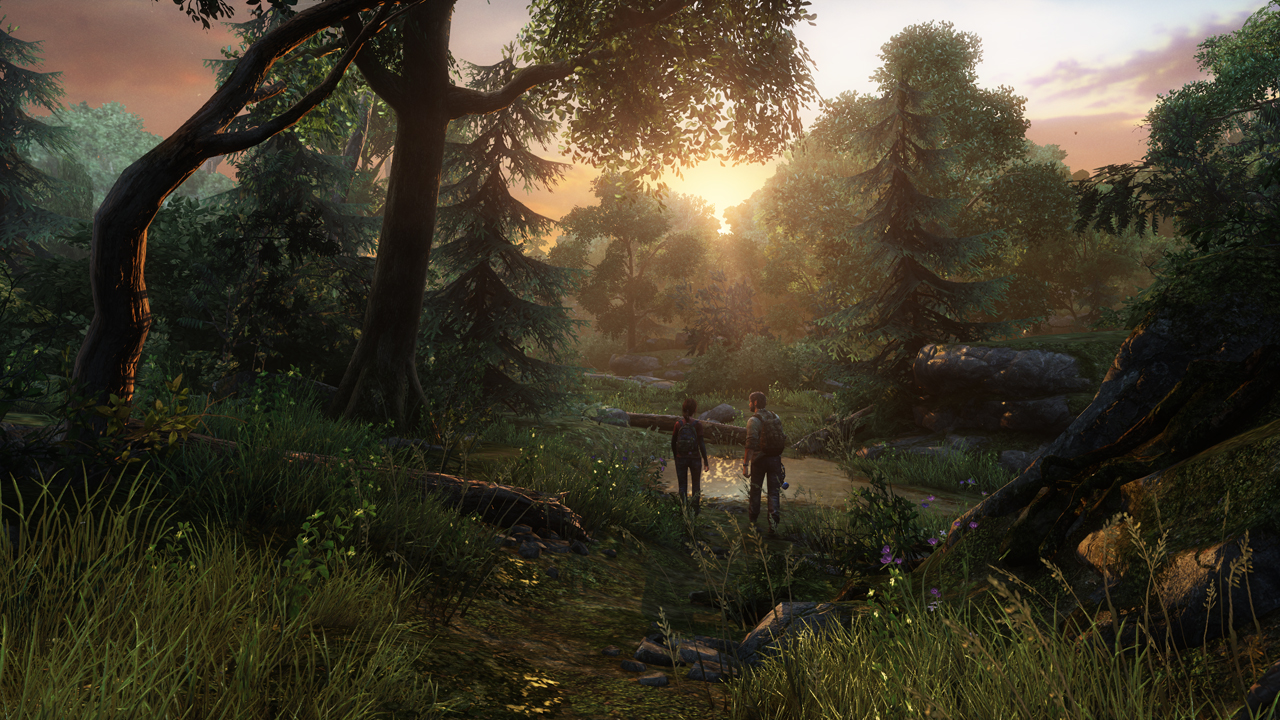
Ellie, played by Ashley Johnson, is just as good as Baker. Maybe even overshadowing him. Despite having to voice (the English soundtrack, of course) and play (using motion-capture) a 14-year-old teenage girl, Johnson proved to be completely convincing. Ellie is sharp and cruel, kind and loyal. She is scared but knows how to laugh at it. She is tougher than any child her age. Yes, she is somewhat like a video game super teenager, and sometimes she is too good to be true. But Johnson played her so convincingly that, one way or another, I still believed in Ellie. Now I understand why Naughty Dog fought so hard for it. so that she appears on the cover of the game The Last of Us is not a game about Joel, but about Ellie.
Perhaps this is just a cliché from countless apocalyptic worlds, but The Last of Us universe seems as believable as its characters. The setting is created with unimaginable attention to detail, allowing for a unique, sometimes agonizing story to be told. If the plot required any architectural wonders to move forward, they immediately appeared thanks to the efforts of talented hands. Joel and Ellie’s journey takes them from Boston through rural areas of Massachusetts to Pittsburgh and beyond, so every government building, country house, abandoned store, and forested area is detailed down to the last sewer grate. (And here’s another thing, I suspect that The Last of Us is trying to convey the message to the player that the American city of Pittsburgh is a complete dump.)
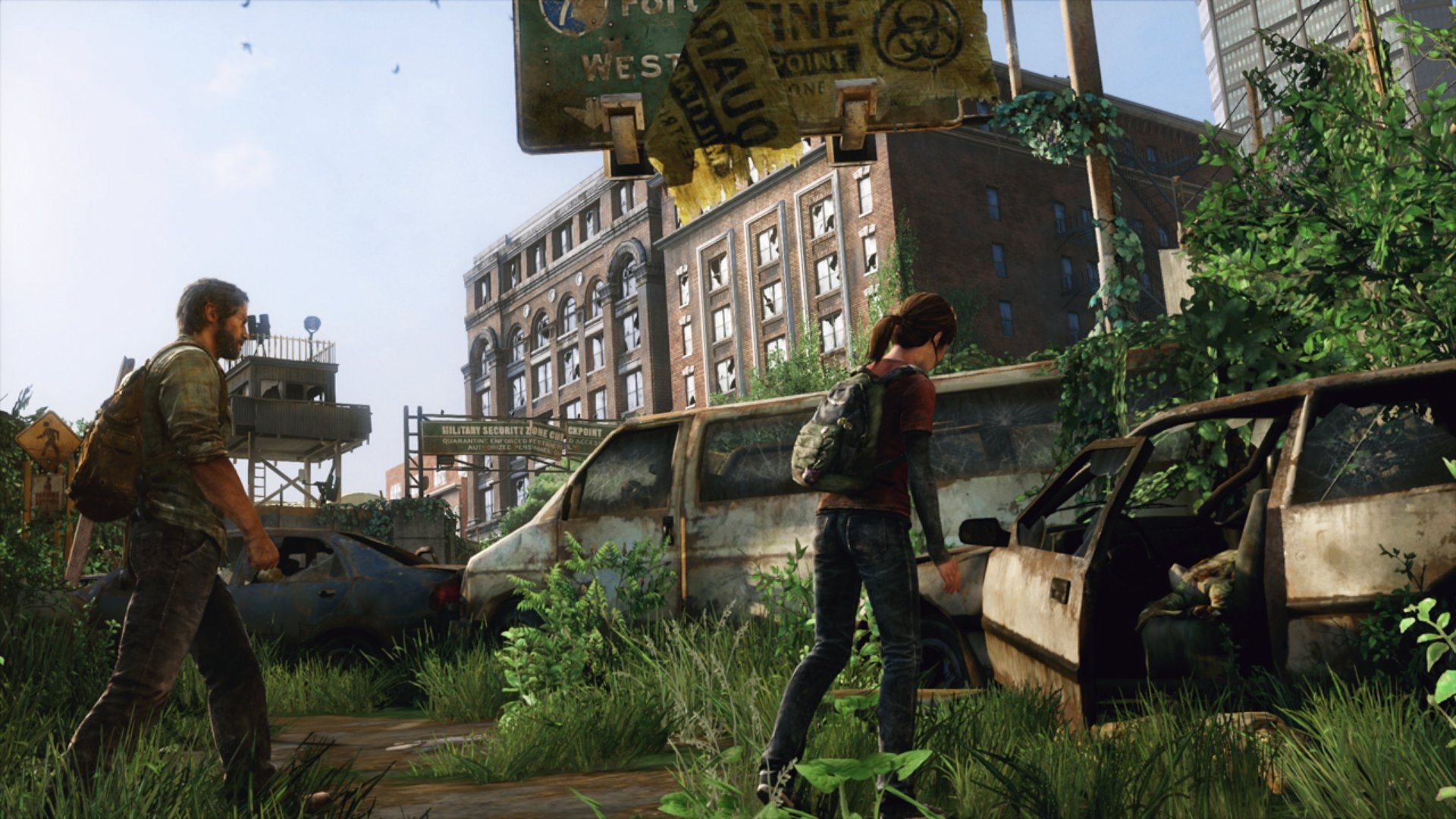
You will have time to look at the decorations, as between scenes of battles and chases, you will have to explore the surrounding space for anything that is out of place. This is necessary to prepare yourself for the next challenges, but it also gives the game a certain rhythm. Sometimes you notice something interesting – a movie poster, the background of a photograph – and as you approach that object, you realize that Ellie wants to ask Joel about it. It is these seemingly random conversations that lead to the best moments of the game.
There is one particularly notable episode in the game where Ellie, Joel, and two other companions wander from building to building on the outskirts of Pittsburgh, searching for something useful and getting to know each other in the process. This episode lasts about fifteen minutes, but you don’t encounter a single zombie or bandit. And this moment is remarkable not because it exists, as it is far from unique – such episodes happen regularly throughout the game. But they seem like a kind of extravagance – there are such masterpieces of design all around, but not a single shot is fired! This speaks to the restraint of Naughty Dog and also to the fact that the gaming industry is sorely lacking in such moments.
Special attention should be paid to the musical accompaniment by Gustavo Santaolalla. The Argentine guitarist, best known for his Oscar-winning work on the film “Brokeback Mountain,” fills the silent moments of The Last of Us with a sinister melancholy. Melodies woven from a growing guitar, electronic bass, and lingering chords. And when you encounter an enemy, the soundtrack intensifies the horror, screaming with a funeral flute and rumbling with muffled timpani. Santaolalla’s work is truly personal and special – games rarely boast such a soundtrack.
In the past few years, Baker has voiced many games, and The Last of Us will undoubtedly be the highlight of his resume. If I didn’t know that it was the same person who voiced Booker DeWitt from Bioshock Infinite and Two-Face from Batman: Arkham City, I would never have recognized him in Joel’s tired and drawling voice. Ellie’s voice in the English version sometimes sounds like she’s had too much ice cream, but for the most part, Ashley Johnson is simply magnificent.
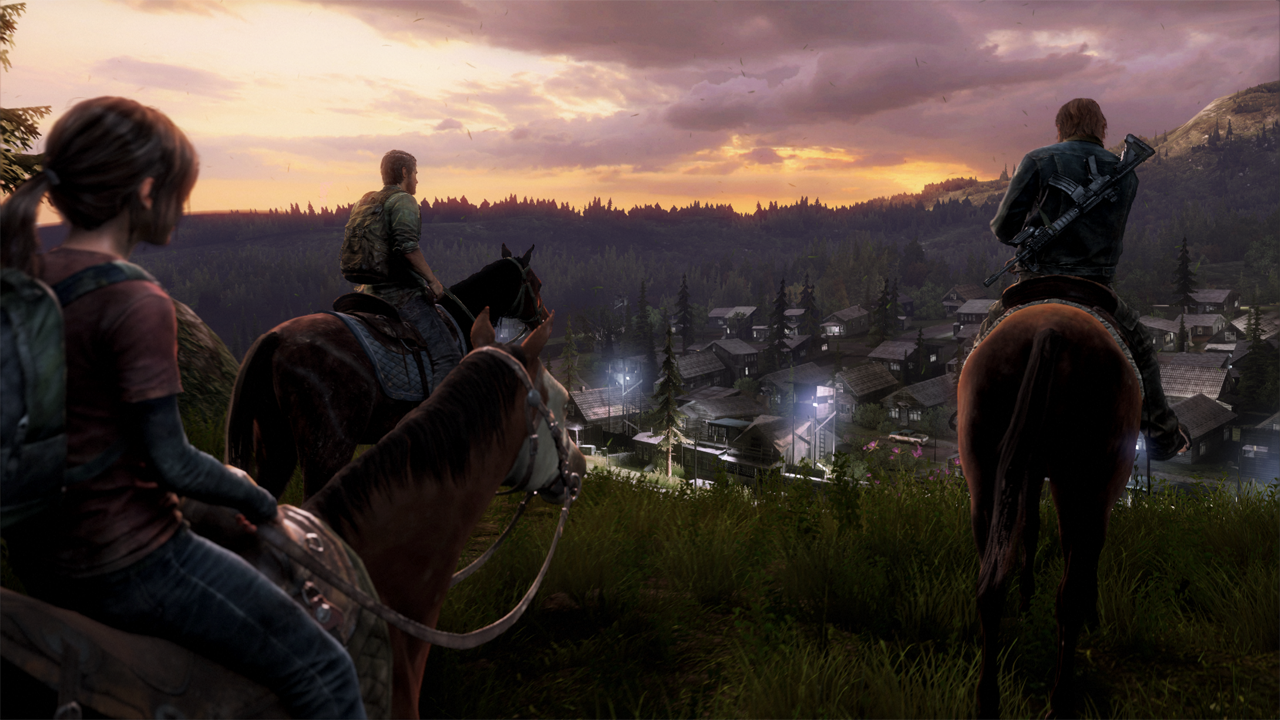
The Last of Us often feels like a true concentrate of a big-budget video game in Hollywood style. Yes, its potential is restrained by all the limitations inherent in such a media product, even considering that it is an example of brilliant execution. For a number of reasons, the video game industry is not yet ready to create a big-budget game without violence but with interesting characters as the main driving force of the plot, so developers have to find a way to merge characters and shooting (and zombies) into one unbreakable whole. And the fact that Naughty Dog has succeeded in this seems remarkable. It is another step towards worthy, emotionally stirring computer game stories that are not based on worn-out genre tropes.
As they say, art is more about how than what. It is an unforgettable feat of design, art direction, and simply hard work. As it turns out, in the house of clichés, you can still find a real gem.
The Last of Us: Left Behind

When the developers from Naughty Dog took on the creation of the first and only story expansion for their game. masterful action-adventure, they clearly did not lack well-developed characters. The strained relationship between Joel and his brother Tommy, Marlene’s journey from Ellie’s guardian to the leader of the Fireflies, the story of Ish, the enigmatic survivor whose notes tell us about his adventures in Pittsburgh – there is plenty of room for development.
But instead, Neil Druckmann, Bruce Straley, and their team decided to focus on the relationships that became defining in the life of the young heroine Ellie – her close friendship with the teenage girl Riley. Those who have already played The Last of Us know how it all ended and can guess how events will unfold in the DLC, so I pay my respects to the developers – they boldly ignored this fact to tell a very touching, sincere, and important story.
Left Behind presents an unexpected duality, playing on the contrast between the familiar Ellie and a previously unknown character. The DLC showcases a turning point in Ellie and Riley’s friendship against the backdrop of a world that has experienced a catastrophe, where death and quarantine zones are the norm, and trips to shopping centers and teenage carelessness seem out of place. Each time the game draws these parallels, it will dampen your pleasure in searching for something new. It is enough to say that exploring the area holds value in itself. It is simultaneously amusing and sad to watch as two girls wander among relics of a once luxurious life and openly wonder how useless it all is.

The battles have maintained their intermittent pace, but tense clashes between bandits and infected open up new space for experiments.
Left Behind helps to better understand the subsequent relationship between Ellie and Joel. The addition provides a more comprehensive understanding of the close bond between the two individuals and allows for a deeper understanding of the nature of such relationships, showing events that were only briefly mentioned in the main storyline. Here, the pseudo-father-daughter relationship is once again turned upside down, offering us even more food for thought about the ambiguous ending of the game. Undoubtedly, it will be useful to replay The Last of Us before starting Left Behind, but moreover, after completing the addition, it is worth taking another look at the main story, keeping in mind the new information.
One of the main strengths of The Last of Us is its mechanics, which are remarkably practical and skillfully woven into the plot. Left Behind continues to develop this idea – you would never think of calling the developers bad screenwriters or directors. The environment remains just as realistic, making you want to explore every room and search every box, but Left Behind goes even further by connecting the exploration of the surroundings with immersion in the story – additional details and dialogues slightly affect the completion of certain tasks. This doesn’t have a major impact on the plot, but it adds dynamics and variety to it.
Furthermore, Left Behind introduces small but important changes to the combat system. Bandits fight against infected, allowing you to provoke advantageous situations for yourself. You can sneak past enemies unnoticed or try to kill them quietly, but the more obvious and natural option is to lure them towards each other.
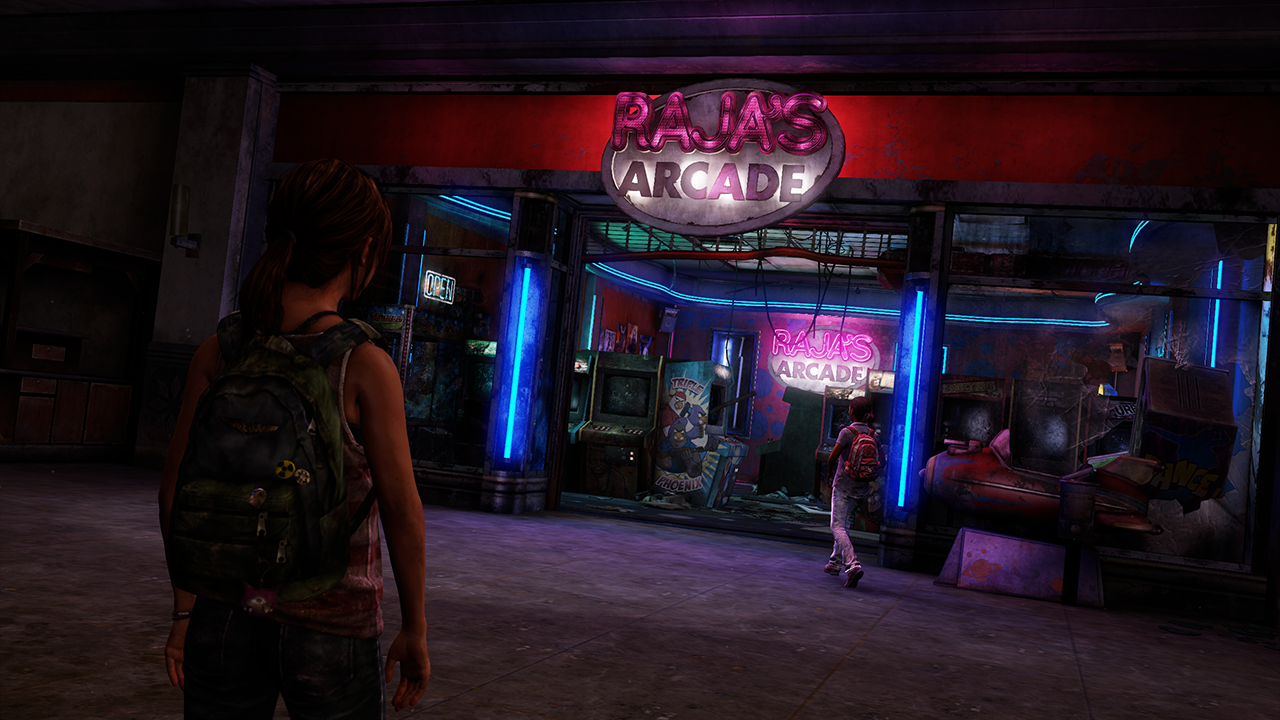
Rumors of the demise of arcade entertainment are exaggerated, their legacy continues to live on in the imagination of two young girls.
Of course, in these battles there are always survivors, so you need to arrange everything in advance so that only the most convenient enemies for you remain alive. It’s a pity that the infected didn’t add new animations – often they will just stand still, as if waiting for something, but, however, it is unlikely worth nitpicking about it.
In any case, I have always liked the combat system that makes you think ahead and fight against an AI that can not only hide behind cover and shoot at you from a distance. As before, the amount of ammunition and crafting materials depends on the difficulty level, and playing on normal, you will rarely experience a shortage of them. The abundance of medkits and ammunition sharply reduces the level of adrenaline, so if you plan to play the game several times, it is better to increase the difficulty to appreciate the difference. It’s up to you, of course, but I would recommend playing on Hard the first time, and on Survivor the second time – here you will fully experience the scarce arsenal of Emmy and the need to carefully search through all sorts of nooks and crannies. Every shot and every kill will count.

Level designers and artists working on the environment have once again outdone themselves.
The conversation about replayability leads us to the question of the price of the add-on. Left Behind costs $14.99 on its own or $19.99 as part of The Last of Us season pass. My first playthrough on Hard difficulty took two and a half hours, and I found all the collectibles but missed some random dialogues. The main difference from the same-length Burial at Sea: Episode One (an add-on for BioShock Infinite) is that Left Behind has an order of magnitude more content and the game progresses at a more enjoyable pace. Each part of the add-on strives to move the story forward, creating interesting battle scenarios and revealing important details of past and present relationships. Thanks to a number of key moments, Left Behind feels not just like an optional add-on, but like an important separate chapter that expands the boundaries of the game universe.
In the end, Left Behind can be called a wonderful addition to the sum of The Last of Us, which was already a game that surpassed many contemporaries. Impeccable level design (oh, if only there were a little more of them), through which Ellie and Riley – brilliantly portrayed by actresses Ashley Johnson and Yaani King – embark on an unforgettable journey, perfectly complements the marvelous compositions by Gustavo Santaolalla.
Left Behind skillfully avoids falling into the comfortable abyss of clichés and does not resort to repetitive tricks just to fill the game time. It is very easy to crave more from this universe – more content, more story in similar DLCs, and overall, a full-scale continuation. But even if Naughty Dog finishes working on their masterpiece, Left Behind will forever remain a masterfully executed final farewell.
Share
Discuss
More Reviews

